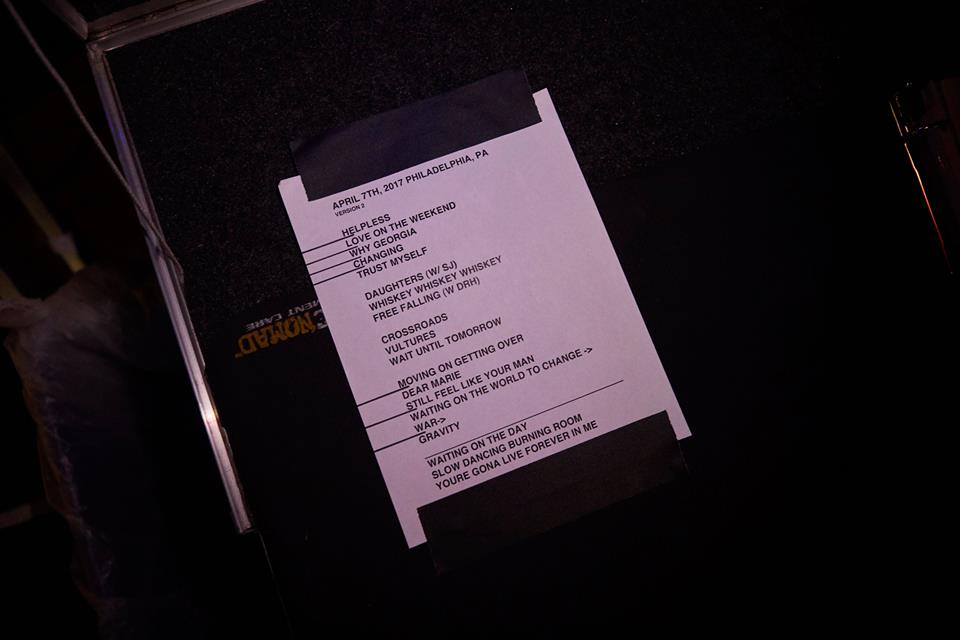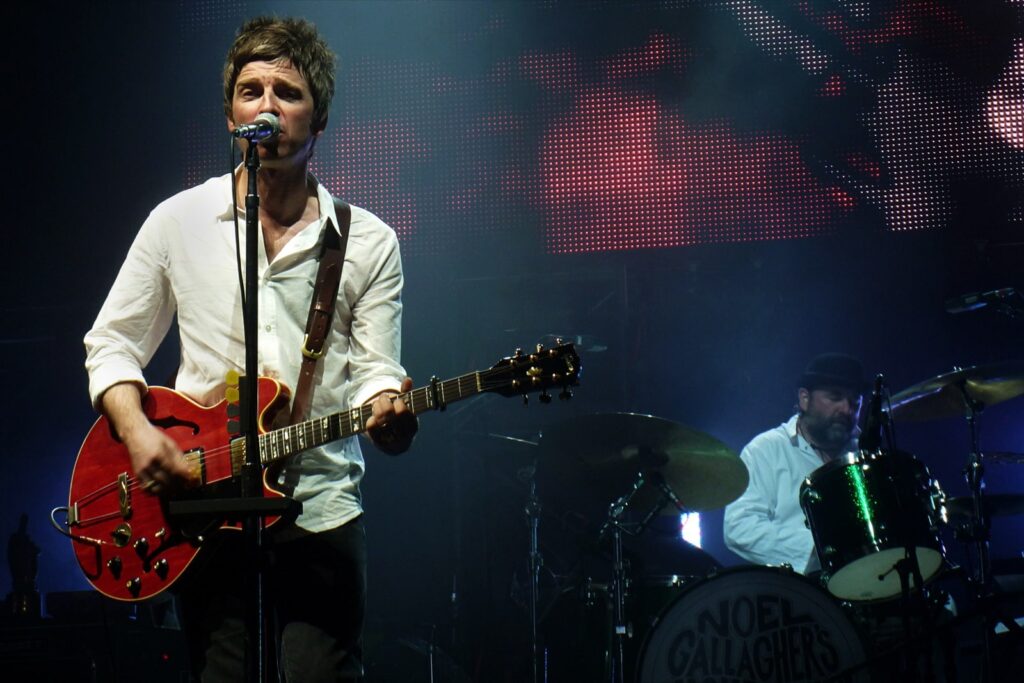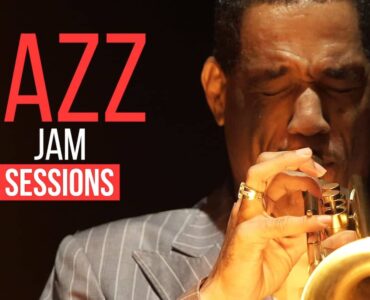For all bands, regardless of their popularity, a strong set list is the foundation to putting on a good show.
Whilst it can be fun to perform without a set list (especially for bands with a pre existing following) a well designed set list allows a band to win over an audience that might not have heard them before.
It means they can focus on their sound, rehearse the performance to perfection and put on the best show possible.

What is a set list?
If you are new to performing live, a set list is simply a list of what songs you would like to play, and in what order.
While that is its simplest form, putting together a great set list that really works can be a bit of an art form in itself.

As such, here is Last Minute Musicians guide to putting together a truly great set list…
1. Begin with a bang
First impressions are extremely important and the first song on your set list should give the audience an overall impression of your bands sound – a real “statement of intent”.
However, before you even get to the first tune, there are a couple of tricks you can use to kickstart your performance;
If you’re a rock or metal band, consider kicking the evening off with a “wash” (No, we aren’t talking about a shower, although that might be a good idea after the show!). Taken from the drumming phrase “cymbal wash” this generally means all of the band just making a bit of coordinated noise before they all kick into the first song in order to up the tension. Plenty of cymbals, a nice low rumble from the bass and even a bit of guitar feedback won’t go a miss here! Although it’s actually a tough thing to describe, for good examples, check out Catfish & The Bottlemen’s live festival sets:
If you’re a funk, motown, jazz big band or even Chicago blues style act, consider adding a bit of an intro to your song for the band to play first, before bringing on and introducing the singer. This worked brilliantly for the likes of Frank Sinatra, BB King and James Brown.
For everyone else, the key really is to start strong. Many people are going to make up their mind about your band within the first couple of songs, so it’s important to start with a couple of songs you consider to work really well together.
That said, the great Les Paul (yes, the man that designed the famous electric guitar model!) always advised that bands should not worry about their first tune as audiences take time to become directly connected with the music. Who are we to argue, eh?
2. Have the energy of your songs form “an arc”
Although it’s slightly genre-dependent, you probably wouldn’t want to see a band that constantly performs songs of the same tempo and mood, after all, a bit of variety never goes a miss!
Now it’s important to understand that by “forming an arc” we don’t mean anything about animals going 2 x 2! A good way to structure your performance could be to start with fast and energetic songs, showing off your principle sound.
Follow this by moving towards slower songs for the middle of the performance (hopefully for a bit of a sing-along!)before finally finishing off with more energetic songs. If you were to plot this out on a graph, it would resemble something that looks like an arc.
While this is good general advice, it is only one way of doing things. A band should choose their set list based on the strengths of their songs. The one key point that all bands should remember is to make every performance memorable!
3. Leave room for improvisation
Again, this will be slightly genre-dependent, but if your band is beginning to attract a fan base, it will become increasingly important to allow some room for improvisation and experimentation within your set.
This could be done by adding in new songs, changing a solo or even changing the arrangements songs. For example playing an acoustic version, or even fundamentally changing the groove of a tune can really help to change things up. For great examples of improvisation, rearrangement and groove change, check out Justin Timberlake’s medley on Late Night with Jimmy Fallon.
4. Ensure that your set list flows
From the perspective of the audience, a band that stops between every song, perhaps mumbles a few words and then clumsily begins the next song can become incredibly tiresome.
This sort of performance can be seen pretty regularly, but if we’re being brutally honest, it can potentially turn new fans away. Similarly, long gaps in between songs can also prove for an incredibly awkward experience for all involved.
By treating every gig as an opportunity to engage with the audience and considering yourself as an ‘entertainer’ as well as a musician, you can end up with a much more interesting and interactive experience for both the band and the audience.
Like him or loathe him, Noel Gallagher is rarely caught without something to say onstage!
Come up with “standby” things to talk about. Interesting facts about the band or song (especially if it’s a cover), stories about how the song was written or what inspired it and even a few tried and tested jokes can all be great ways to avoid an awkward silence and get that extra bit of audience interaction.
That said, no one wants to hear you break into a long monologue after every single tune, so it’s important to strike a balance.
This can also be done musically – weaving songs into one another (known as a “segue”) and leaving clear gaps in the set to allow for audience participation such as clapping along or sing-along breakdowns.
5. End with a showstopper
It could well be argued the most important bit of the set is the end of the performance and a band should aim to make as memorable impact on the audience as possible.
Depending on the genre, this could be an opportunity for one last sing along with the audience, the lead guitarist’s last chance for a solo (or both!). Either way, make sure you have a strong set of songs towards the end of your set.
As the old adage says, it’s important to always leave the audience wanting more!
Not only will this increase your chances of being asked to perform another show at the same venue, but you may even get asked for an encore! You should know that there are very few musical experiences quite as gratifying as having 300 people shouting, “We want more!” at the end of a show…
General tips:
- Always over prepare. It’s better to have more songs ready and cut some than to not have enough. That said, if you’re playing a bill with multiple bands, keep one eye on the time as you don’t want to run over by so much you eat into another bands set.
- Make sure everyone has copies of the set list and compares notes beforehand. The last thing you want is the drummer launching into a different introduction to the guitarist!
- Keep a sharpie handy for last minute set changes. This should be part of your gig bag. For more advice on what to keep in there, check out this LMM guide.
- If you’re a function or covers band, decide as a group if you want to take requests. Be realistic, given the amount of material you have prepared. You can always offer the audience alternatives IE “Sorry, we’ve already done ‘Mr Brightside’ but how about ‘Chelsea Dagger’?”
Sources:
- http://dynamikrecords.wordpress.com/2012/08/03/how-to-write-the-ultimate-set-list/
- http://diymusician.cdbaby.com/2010/11/building-the-perfect-set-list/
- https://www.lastminutemusicians.com/search/covers_bands.html
Do you have any tips on writing a set list? Let us know in the comments below!





















